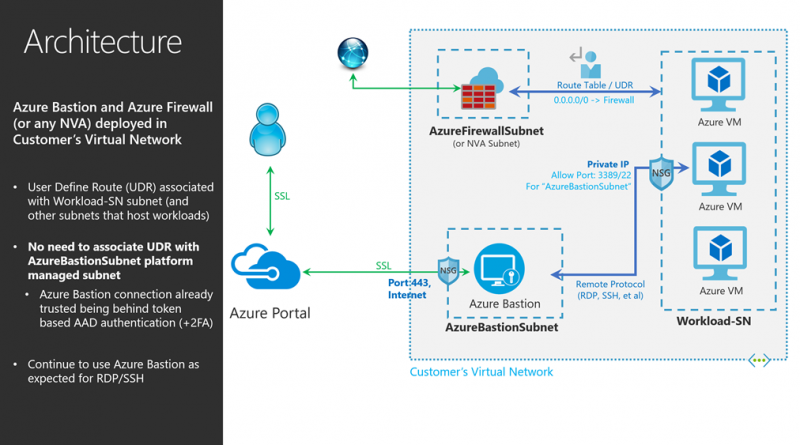

Once we have our server, we enter the Virtual Machine resource, and at the top we click on “Connect” and in the drop-down that appears we click on “Bastion”:Ī new window will appear where we must enter the Username and Password:Īnd automatically it will open a new window in the Web browser where we will see the desktop of our Windows Server: Verification
#AZURE BASTION HOW TO#
In this entry I made you can see how to Create a Virtual Machine in Azure, the only peculiarity of this creation is that in the Networking part we are not going to carry out the creation of a Public IP: To test this functionality, we are going to host a Windows server and a Linux server within the same Virtual Network to perform a connection test using the web browser. Once Bastion is created, these are the resources that are created within our resource group: We wait for it to be deployed, since it usually takes about 5-10 minutes to deploy: In the first point we must choose our Subscription, the Resource Group where we want to create this service, the name that we want to give it, the region, the Virtual Network (which involves a creation with special characteristics) and a Public IP:Īs I mentioned before, our Virtual Network must have a Subnet called “AzureBastionSubnet” and an IP range with prefix / 27: Creation of Our Service

Remote session over TLS: Azure Bastion uses an HTML5-based web client, which transmits our connection to our server, thus obtaining an RDP / SSH session over TLS on port 443.RDP and SSH directly on the Azure portal: We can directly access our RDP and SSH session on the Azure portal with a single click.Once the three main configuration steps are completed, you can also assign tags and review the settings before provisioning.When we connect to our servers through Bastion we do not need a Public IP, since through this service we access them through the web browser as we will see in the Step by Step below. You can select an existing IP address or create a new one. Finally, you need to assign a public IP address.The VNET must contain a subnet called AzureBastionSubnet with a prefix of at least /27. Select an existing VNET or create a new one.

Select a subscription, resource group, giving the Bastion host a name and assigning a region.The first is to create a Bastion host resource manually. There are two ways you can set up Bastion in the Azure management portal. You’ll also find detailed instructions on how to create an Azure Bastion host. You can find an up-to-date list of supported regions on Microsoft’s website here.

How to deploy Azure Bastionįirst check that the Azure region you want to use supports Bastion. VMs provisioned using WVD are already protected using an architecture like that provided by Bastion. If you are using Azure Virtual Desktop (AVD), you don’t need Bastion. Image #1 Expand Securing Remote Virtual Machines Using Azure Bastion (Image Credit: Microsoft)īastion is useful in situations where it wouldn’t be cost effective to deploy your own secure connection solution in Azure or if you can’t connect to an Azure VNET using a virtual private network (VPN).


 0 kommentar(er)
0 kommentar(er)
